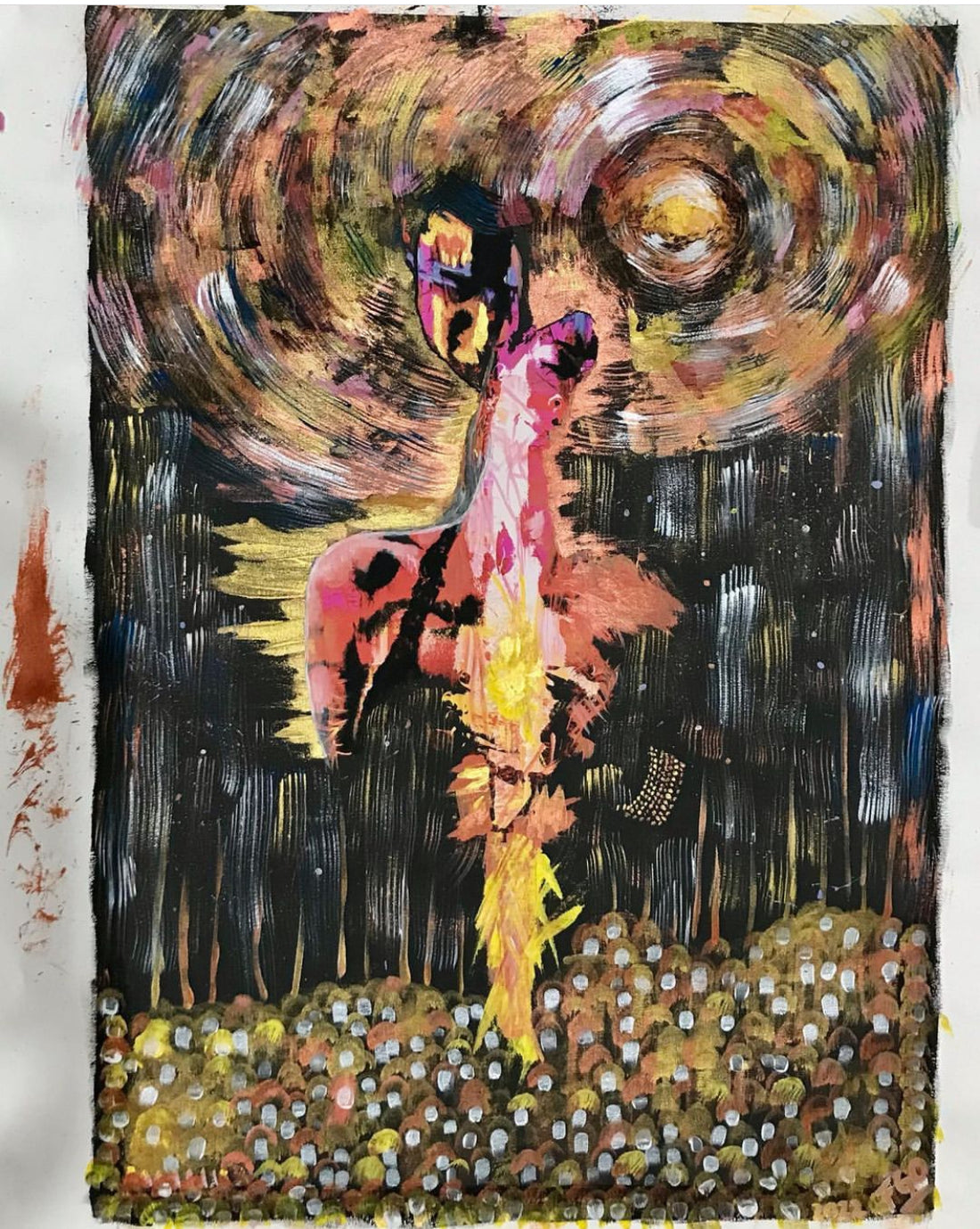Acrylic painting is a modern painting technique that uses pigments mixed with an acrylic binder. It is known for its versatility, durability and fast drying speed, making it popular with artists of different styles and genres. Acrylic paint can be applied to a variety of surfaces, including canvas, wood, paper, fabric and metal, and can be used to create a wide range of effects and finishes.
The acrylic painting process generally involves the following steps:
1. Surface Preparation: The surface on which the paint is to be applied is prepared with a primer (gesso) to seal and provide a uniform surface for the paint. This may include stretching and preparing the canvas, or applying a coat of gesso to paper, wood, or other substrate.
2. Layering: Acrylic paint is applied in layers, starting with thin coats and then gradually building up the paint with successive coats. Artists can work quickly due to the paint's fast drying time, allowing them to layer and make adjustments quickly.
3. Mixing Colors: Acrylic colors can be easily mixed with each other to create a wide range of shades and shades. Artists can mix colors directly on the palette or work surface to achieve desired effects.
4. Texturing: Artists can add texture to their artwork by using different tools and techniques, such as using brushes, sponges, palette knives, stenciling, or acrylic texture mediums. This allows you to create three-dimensional effects and add visual interest to the painting.
5. Finishing and sealing: Once the paint has completely dried, a clear varnish or acrylic sealer can be applied to protect the surface and enhance the colors. This helps preserve the paint and provide a layer of protection against moisture and UV damage.
Some great exponents of acrylic paint include:
1. Jackson Pollock (1912-1956): Known for his gestural and abstract painting style, Pollock was a pioneer in the use of acrylic paint in the 1940s. His artwork influenced the Abstract Expressionism movement and changed the way painting was perceived and practiced.
2. Willem de Kooning (1904-1997): Another prominent member of Abstract Expressionism, de Kooning used acrylic paint in his works to create bold gestures and dynamic textures. His work explored the relationship between the figure and abstraction, and had a lasting impact on contemporary art.
3. David Hockney (b. 1937): Known for his vibrant and colorful paintings, Hockney is a master in the use of acrylic paint. Her work includes landscapes, portraits and scenes of everyday life, and she has been recognized for her distinctive style and technical innovation.
4. Gerhard Richter (b. 1932): Celebrated for his eclectic and experimental approach to painting, Richter uses acrylic paint in a variety of styles and techniques. His work ranges from abstraction to figurative representation, and has been acclaimed for its emotional depth and exploration of visual perception.
5. Frank Stella (b. 1936): Known for his minimalist and geometric approach, Stella has used acrylic paint in his works to explore the relationship between form, color and space. His abstract paintings are recognized for their apparent simplicity and visual impact.
These are just a few examples of the many artists who have used acrylic paint to create innovative and significant works in the history of contemporary art. Each of them has contributed to the development and evolution of this versatile painting technique.
